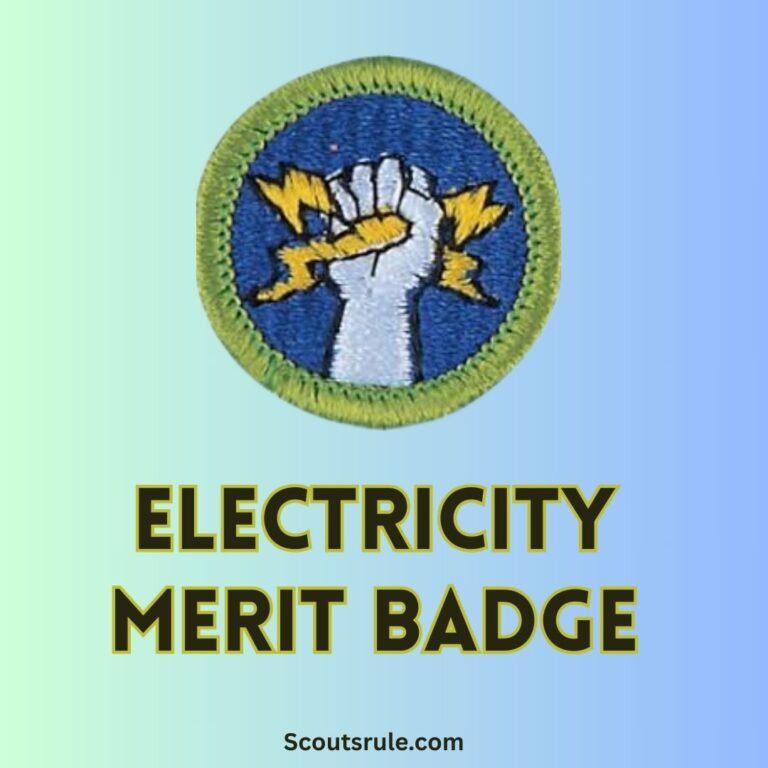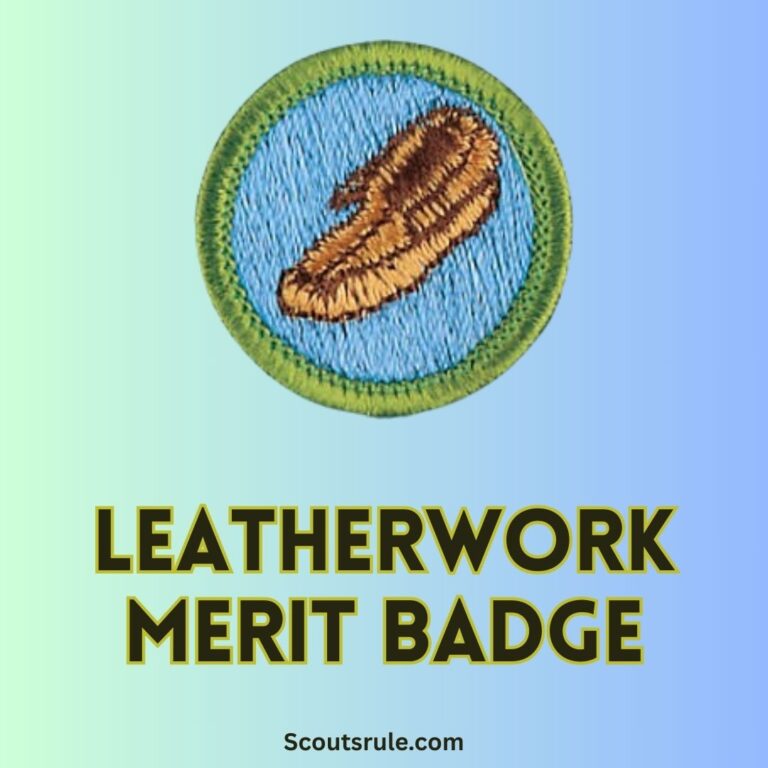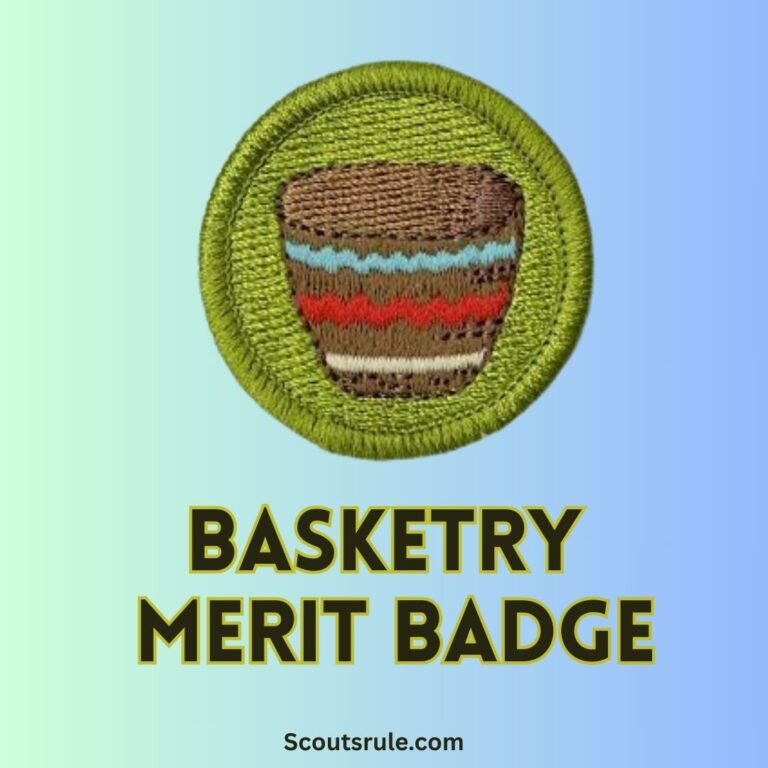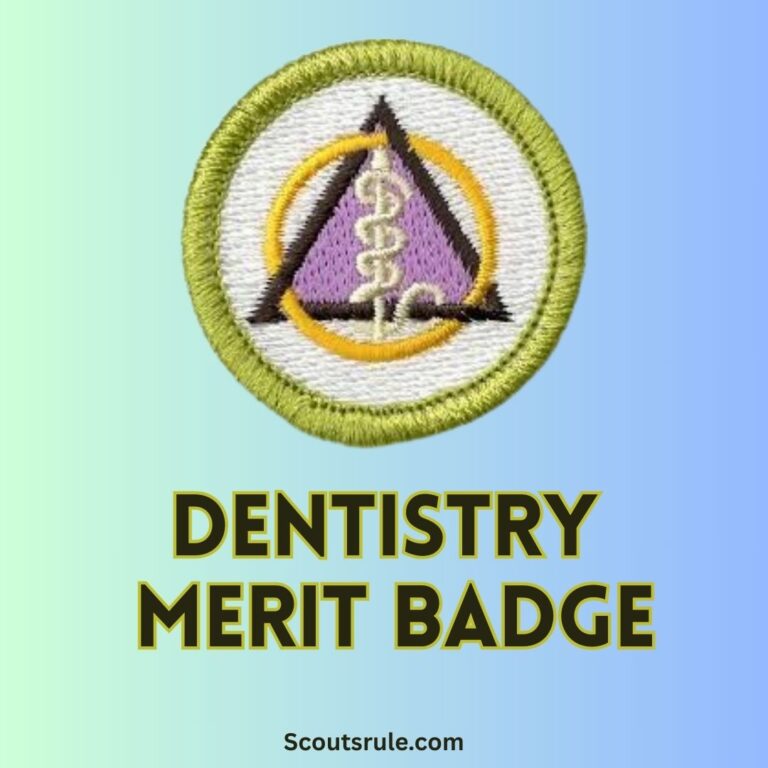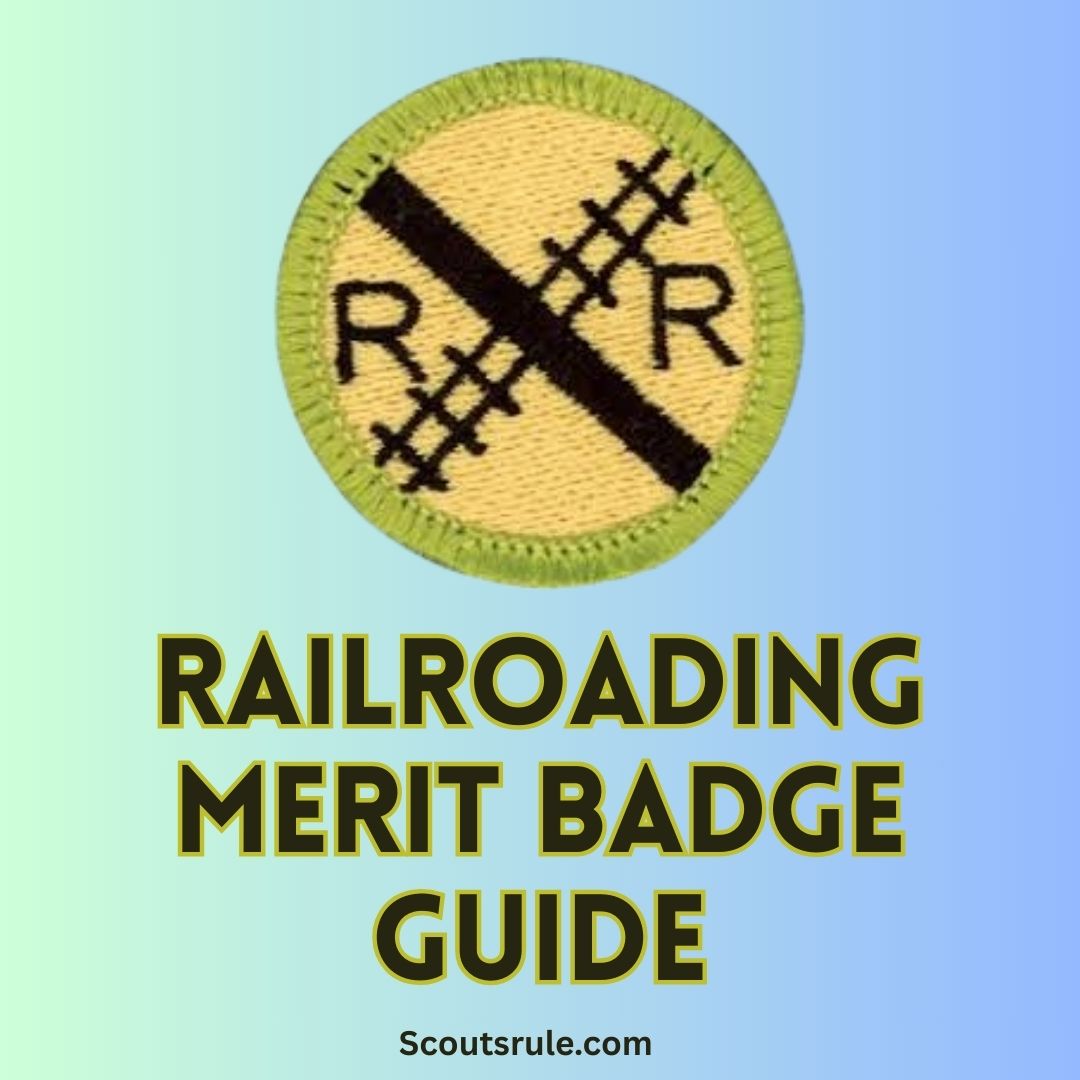
This guide is designed to help you explore the fascinating world of railroads—from understanding the history and technology behind trains to becoming familiar with railroad operations, safety procedures, and even optional areas such as model railroading or railfanning. Whether you are a train enthusiast, interested in transportation history, or considering a career in the railroad industry, this guide will walk you through each requirement step by step, offer practical project ideas, and provide strategies for research, documentation, and self-reflection.
Post Contents
- Introduction: The Importance of Railroads
- 2. Purpose and Objectives of the Railroading Merit Badge
- 3. The Evolution of Railroading in America
- 4. Understanding Modern Trains and Locomotive Technology
- 5. Railroad Industry, Safety, and Signal Systems
- 6. Exploring Optional Areas: Model Railroading and Railfanning
- 7. Practical Projects and Field Experiences
- 8. Documentation and Record Keeping
- 9. Additional Tips, Resources, and Career Connections
- Conclusion: Embracing the Legacy and Future of Railroading
Introduction: The Importance of Railroads
Railroads have played a pivotal role in shaping the United States—from connecting vast regions and fueling industrial growth to being the backbone of mass transit and commerce. Trains, with their power, efficiency, and remarkable impact on the economy, represent a critical part of American history and modern infrastructure.
The Railroading Merit Badge gives you a chance to explore this wonderful world. It challenges you to learn how railroads operate, why they are so significant for trade and industry, and how modern technology has transformed an age-old way of transportation. As you work through this badge, you will gain an understanding of everything from the basic types of trains and key locomotive technologies to the importance of safety signals and the role of railroads in our economy.
2. Purpose and Objectives of the Railroading Merit Badge
The primary objectives of the Railroading Merit Badge are to:
- Educate and Inform: Gain insights into the history, technology, and operations of railroads. Learn how they contribute to both local communities and the nation’s economy.
- Develop Research and Documentation Skills: Learn to conduct detailed research using books, websites, interviews, and field visits. Keep an organized record of your observations and reflections.
- Engage in Hands-On Learning: Participate in activities that range from visiting a railroad station or a maintenance yard to observing trains in operation—this hands-on approach solidifies your understanding of railroading practices.
- Foster Critical Thinking and Problem Solving: Explore the technical challenges of operating trains and maintaining tracks. Analyze innovations such as dynamic braking and radial steering trucks.
- Develop Communication Skills: Present your findings clearly, whether through written reports, oral presentations, or visual aids.
- Encourage Career Exploration: Discover the vast range of careers that support or operate within the railroad industry—from engineers and conductors to rail yard managers and safety inspectors.
These objectives are designed to ensure that by the end of this merit badge project, you not only know about trains and railroads but also appreciate their historical significance, technological complexity, and their ongoing role in society.
3. The Evolution of Railroading in America
3.1 Railroad History and Its Economic Impact
Railroads have been instrumental in the development of America. Starting in the early 19th century, railroads transformed the country from a collection of isolated communities into a connected, economically vibrant nation. Their impact includes:
- Opening New Markets: Railroads enabled goods to be transported over long distances quickly, opening up new markets for agricultural and industrial products.
- Industrial Revolution: The rise of railroading coincided with the industrial revolution, further advancing technology and manufacturing processes.
- Urbanization: With improved transportation, population centers grew around major railroad hubs, triggering urban expansion and economic growth.
- Innovation in Technology: Advances in locomotive technology, such as the evolution from steam engines to diesel and electric models, have continually revolutionized rail transport.
3.2 Types of Railroads: Freight, Passenger, and Mass Transit
In modern America, railroads are diverse. The primary classifications include:
- Freight Railroads: These railroads transport goods—ranging from raw materials to finished products. Some are “unit trains” that carry a single commodity (for example, coal), while others are mixed freight trains that handle various products.
- Passenger Railroads: Used for transporting people, this category includes intercity trains like Amtrak services and regional commuter trains that connect urban centers.
- Mass Transit Systems: Urban and suburban transit systems (such as metro or subway systems) serve as the backbone of public transportation in many cities, reducing road congestion and promoting sustainable urban mobility.
Understand how each type of railroad plays a unique role in commerce and daily life, and consider how innovation in one area often influences the other.
4. Understanding Modern Trains and Locomotive Technology
4.1 Types of Modern Freight Trains and Passenger Trains
As part of your study, you should:
- Identify Different Train Types: Name at least three modern freight trains. Describe key differences in design, such as unit trains (which are more efficient for bulk commodities) versus mixed trains (which carry various goods).
- Passenger Train Characteristics: Research popular passenger trains and their features. Consider aspects like speed, comfort, and scheduling.
4.2 Locomotive Power: Diesel, Electric, and Their Components
Modern locomotives are typically powered by diesel or electricity. Learn about:
- Diesel Locomotives: How they utilize diesel engines to generate power, the role of generators, and how this power translates into traction.
- Electric Locomotives: How power is supplied through overhead wires or third rails, and understand the advantages of electric traction (e.g., rapid acceleration, lower emissions).
- Key Components: Familiarize yourself with components such as engines, transmissions, couplers, and braking systems.
4.3 Key Technologies: Dynamic Braking and Radial Steering Trucks
- Dynamic Braking: Learn what dynamic braking is and how it converts kinetic energy into electrical energy to slow down the train. This system is essential for controlling high-speed trains.
- Radial Steering Trucks: Understand how radial steering trucks (the wheel assemblies under the locomotive and railcars) are designed to improve stability and reduce track wear. They allow for smoother rides and more efficient turning on curves.
Use diagrams, model representations, or even video demonstrations (if available) to visualize these technologies, and describe their significance in modern railroading.
5. Railroad Industry, Safety, and Signal Systems
The safe operation of railroads is of paramount importance. This section covers the safety measures that ensure the smooth running of rail systems.
5.1 The Role of Signals and Rail Signs
- Railroad Signals: Signals are crucial for controlling train traffic. Learn about the various signal types (e.g., block signals, interlocking systems, and automated signals) and how these systems prevent collisions.
- Rail Signs: Understand the different types of rail signs used along the tracks to convey vital information to engineers, such as speed limits, track conditions, and alerts for upcoming intersections.
5.2 Safety Standards, Procedures, and Equipment
- Safety Protocols: Study the safety practices that railroads implement, including regular track inspections, maintenance schedules, and emergency response procedures.
- Personal and Operational Safety: Explore the equipment and attire used by railroad workers. This might include high-visibility clothing, specialized boots, and hard hats.
- Training and Certification: Research the types of training required for railroad employees to ensure safe operations on the tracks.
Explain these procedures in your project, and if possible, observe a local rail yard or speak with a rail safety expert to gain firsthand knowledge.
6. Exploring Optional Areas: Model Railroading and Railfanning
Many Scouts have the option to deepen their experience by choosing one of two specialized areas:
6.1 Model Railroading: A Miniature World of Trains
- Definition and Scope: Model railroading involves building, operating, and maintaining scaled-down models of railroads. It is a hobby that combines art, engineering, and historical research.
- Building and Operating Models: Learn about the different scales used in model railroading, such as HO scale or O scale, and explore techniques for building layouts, constructing realistic scenery, and installing digital control systems.
- Project Ideas: Consider creating a detailed layout that replicates a real railroad segment or a historical train station. Document your building process with photographs, sketches, and detailed descriptions of techniques used.
6.2 Railfanning: Observing Real Trains
- Definition and Techniques: Railfanning is the hobby of observing, photographing, and recording the operations of trains and railroads. It requires patience, attention to detail, and an understanding of the operational patterns of railroads.
- Activities: Visit a local railway or station, observe the operation of trains, and record your observations. Learn to identify different types of cars and locomotives, and document your experiences.
- Connecting to the Industry: Railfanning allows you to appreciate the scale and complexity of the railroad system in real life. It’s an opportunity to connect your academic research with the vibrant, tangible experience of watching trains in action.
Choose one of the above optional areas—model railroading or railfanning—and dedicate a section of your project to capturing your work in that area.
7. Practical Projects and Field Experiences
Real-world experiences are essential to fully grasp the dynamics of railroading. Consider these project ideas:
7.1 Field Visits
- Railroad Stations and Yards: Arrange a visit to a local railroad station or a rail yard. Observe the operations, ask questions about how freight and passenger trains are managed, and learn about the maintenance of tracks and equipment.
- Train Museums and Exhibits: Visit a train museum or historical exhibition. Many museums offer guided tours that explain the evolution of railroading and its impact on society.
7.2 Hands-On Projects
- Documenting Train Types: Create a portfolio by taking photos (if permitted) or detailed sketches of various railroad freight and passenger cars. Label each type and describe its purpose within the railroad system.
- Safety Demonstration: Develop a small presentation or demonstration on railroad safety procedures based on your research. Explain how signals and signs maintain order and prevent accidents on the tracks.
7.3 Interviews and Observations
- Interview Railroad Employees: If possible, interview someone who works in the railroad industry, such as an engineer, conductor, or maintenance employee. Ask about their daily responsibilities, the safety measures they follow, and any advice they have for young enthusiasts.
- Observation Logs: Keep a detailed log of your field visits and experiences. Record dates, locations, what you observed, and personal reflections on how each visit deepened your understanding of railroading.
8. Documentation and Record Keeping
Successful completion of the Railroading Merit Badge depends on thorough documentation. Here are key strategies:
- Maintain a Detailed Journal: Record every observation, interview, and project step in a dedicated journal or digital document. Include dates, locations, and reflective insights.
- Create a Portfolio: Organize your work by requirement. Use clear headings and labels for sections covering topics such as train types, safety practices, technology, and personal projects.
- Include Visuals: Enhance your documentation with photographs, sketches, diagrams, and charts. Visual aids help demonstrate your observations and clarify complex technical details.
- Write Summary Reports: Periodically summarize your findings and progress. These summaries should reflect on what you learned, any challenges encountered, and how your understanding evolved over time.
Your portfolio becomes a living record of your journey, accessible both to your merit badge counselor and as a personal resource for future exploration.
9. Additional Tips, Resources, and Career Connections
Additional Tips
- Engage with the Community: Get involved with local railfanning groups or model train clubs. Sharing your enthusiasm with experienced enthusiasts can provide additional insights and practical tips.
- Utilize Online Resources: Websites like ScouterMom.com and Railroad-related sections on Scoutles.com offer sample worksheets, checklists, and additional reading materials.
- Review Official Materials: Always consult the official Boy Scouts of America Railroading Merit Badge pamphlet to ensure you meet all current requirements.
- Ask Questions: Don’t hesitate to reach out to local railroad employees or train museums for more information. Many are passionate about their work and love to educate young enthusiasts.
Resources
- Railroad Museums and Historical Sites: Visit sites such as the National Railroad Museum or local history centers that detail the evolution of railroads.
- Books and Documentaries: Look for books on American railroading history, the technology behind modern trains, and documentaries that showcase the operations of large railroad companies.
- Online Forums and Communities: Participate in railfanning forums (e.g., Railroad.net, dedicated Reddit boards) where you can ask questions and share your observations with other enthusiasts.
- Industry Websites: Explore pages from companies or regulatory agencies such as the Federal Railroad Administration (FRA) for information on safety standards and technological advances.
Career Connections
Railroading can be both a rewarding hobby and a stepping stone toward a career. Some potential career paths include:
- Railroad Engineering: Working on the design and maintenance of locomotives, tracks, and signaling systems.
- Operations Management: Overseeing the day-to-day functions of a railroad company or a specific rail yard.
- Safety and Compliance: Ensuring that regulatory safety standards are met.
- Railfanning and Documentation: While not a formal career path, many enthusiasts become knowledgeable commentators, writers, or historians dedicated to preserving railroad history.
- Transportation Planning: Developing sustainable solutions for intercity rail networks and commuter transit.
Reflect on whether any of these career paths interest you, and consider interviewing professionals or attending local events related to rail transportation.
Conclusion: Embracing the Legacy and Future of Railroading
The Railroading Merit Badge is more than a study of trains and tracks—it is an immersive journey into one of the cornerstones of American innovation and economic growth. By exploring the history, technology, and operational details of railroads, you gain a comprehensive understanding of how trains transformed nations, connected communities, and continue to influence modern transportation.
As you complete the requirements—studying locomotive technology, examining safety systems, documenting your observations during field visits, and even engaging with optional projects like model railroading or railfanning—you are building a robust knowledge base that combines historical insight with practical experience. The skills you develop in research, documentation, and analysis are not only valuable within the realm of railroading but also essential to your broader education and future endeavors.
Embrace this merit badge as an opportunity to appreciate the engineering marvels of the railroad industry, to learn first-hand about the practices that keep trains running safely, and to connect with a community of enthusiasts who share your passion for trains. Whether you dream of a career in transportation, wish to contribute to historical preservation, or simply enjoy the beauty and power of modern locomotives, the insights you gain here will serve as a stepping stone toward a deeper understanding of engineering and industry.
May your journey through the Railroading Merit Badge ignite a lasting appreciation for the past, present, and future of rail transportation—and inspire you to explore, learn, and perhaps even innovate in the world of railroads.
Happy railroading, and may your passion for trains and technological ingenuity pave the way for a bright, connected future!

Hi, Robin here, A former lead Scout and here I share my inspiring stories about USA Scouts, leadership, adventure, how to guides and more.



